3. Research
To ensure the solution matched real needs, I conducted:
- Surveys with 10 frequent international flyers.
- Pain-point analysis of manual form usage
- Created 2 personas (business traveler, tourist)
- Mapped journey stages from arrival to baggage claim
This empathy-driven approach laid the foundation for smoother flows and clearer navigation.
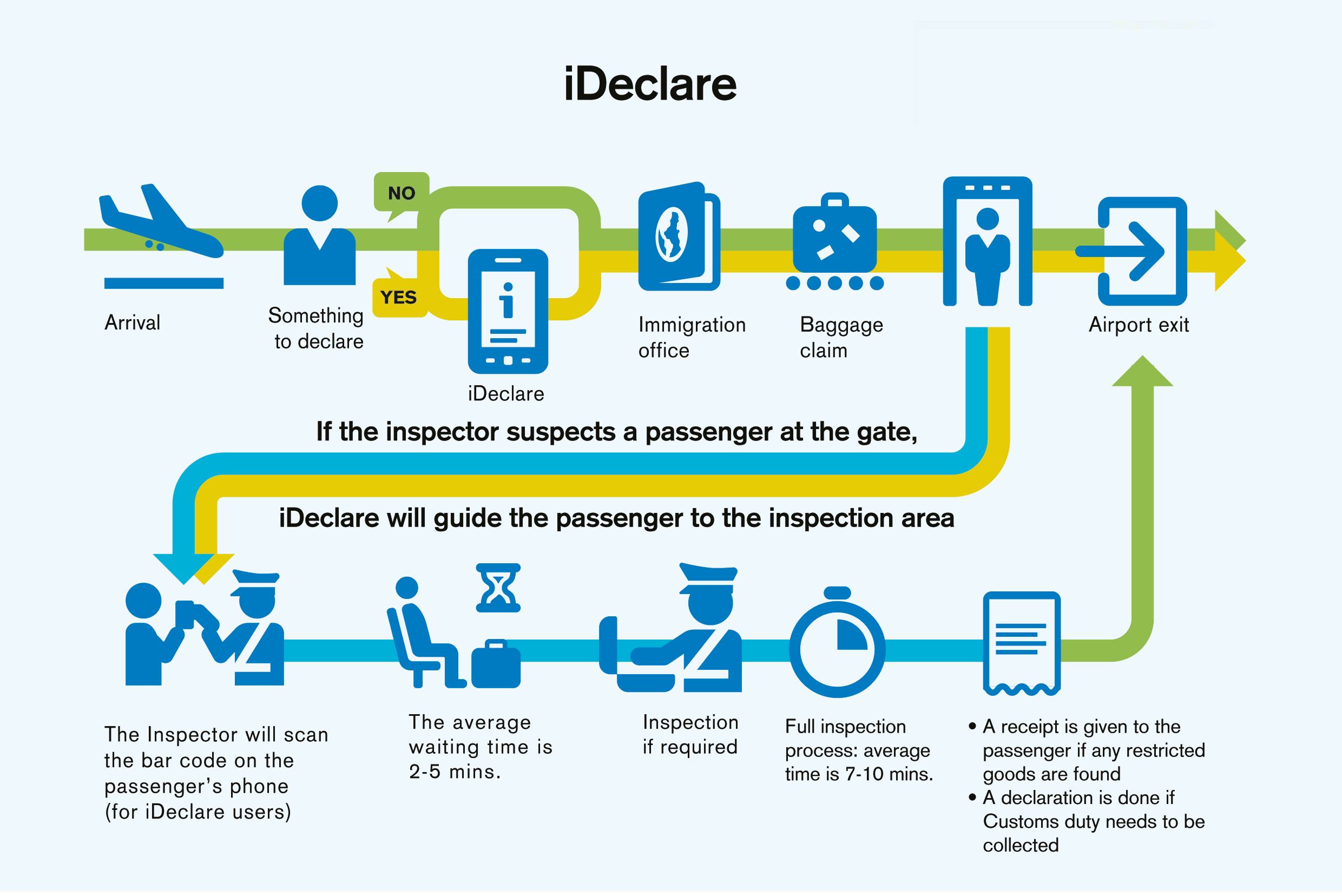
User Persona
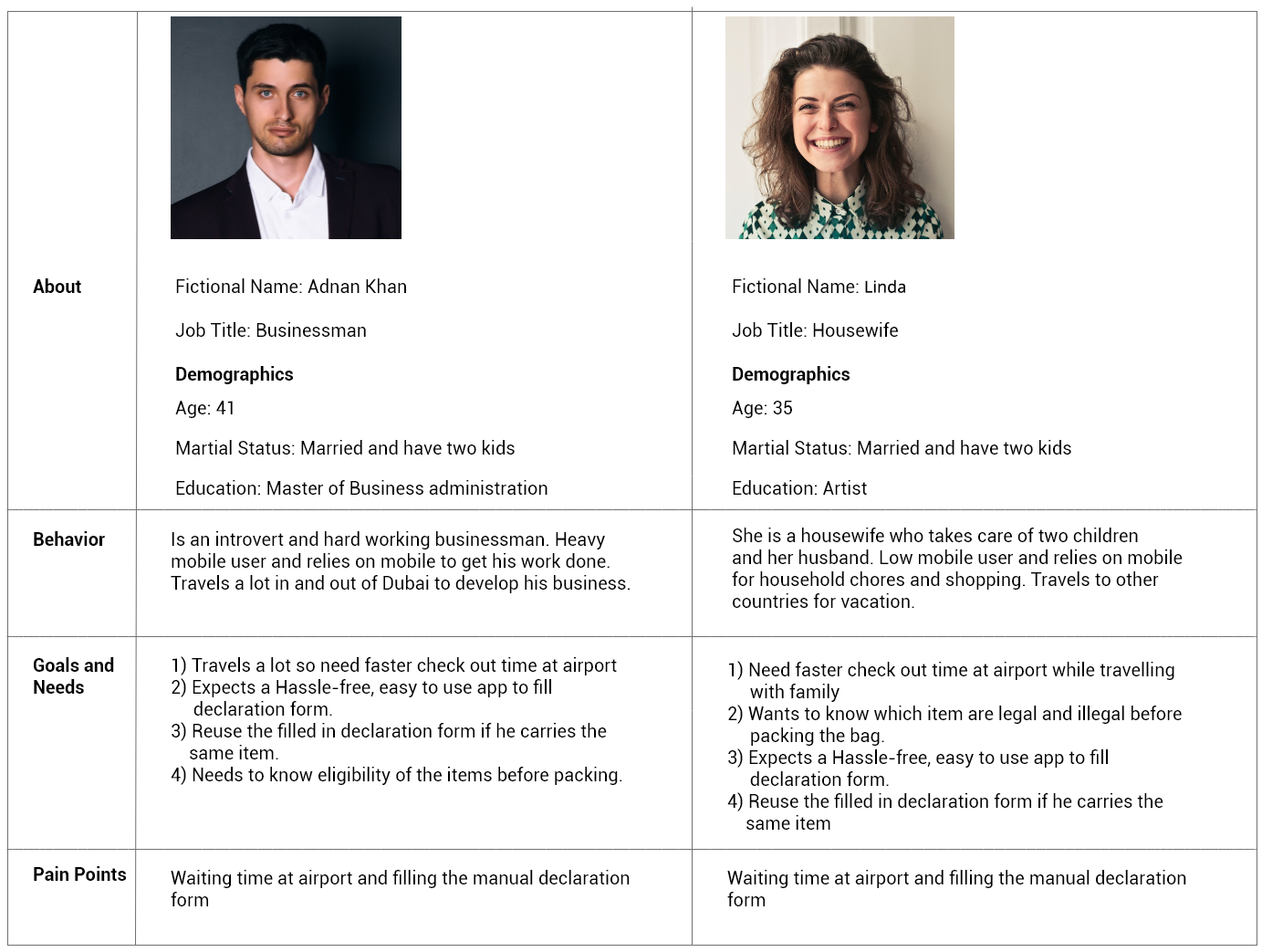
User Journey Map

4. Design
The design phase aimed to reduce friction, guide travelers intuitively, and streamline interactions for different declaration scenarios. Every screen and flow was built to support confident decisions, minimize confusion, and accelerate customs clearance.
Design Objectives
- • Frictionless Declaration: Minimize the number of steps and inputs.
- • Clear Categorization: Present goods in logical, visual groups for better understanding.
- • Real-Time Clarity: Give users instant feedback on declaration needs and duties.
- • Cross-Device Simplicity: Ensure fluid interaction on all screen sizes.
- • Visual Guidance: Use icons, colors, and cards to reduce cognitive load.
A step-by-step guide that asks a few quick questions to determine whether the user needs to declare — reducing unnecessary submissions.
Dynamic fields with grouped categories like Electronics, Gifts, Food, Currency, Liquor, etc. Users simply tap the item, enter quantity/value, and the system handles duty estimation.
Based on item type, value, and quantity, duties are estimated in real-time. Edge cases (e.g., exceeding limits) trigger alerts or recommendations.
Stores frequently traveled routes, allowing returning users to reuse or clone previous declarations with a single tap.
After submitting the declaration, a scannable QR is generated for faster verification at the customs desk. Works offline once generated.
UI Workflow Enhancements
To ensure a smooth and intuitive experience, the app's UI workflows were optimized in the following ways:
- • Save & Resume: Users could save declarations mid-way and complete them later.
- • Smart Categorization: Items were grouped into clear, tap-friendly categories with filters.
- • Pre-filled Info: Travel and personal details auto-filled for returning users.
- • History Dashboard: Past declarations could be viewed, reused, or updated easily.
- • Responsive UI: Optimized for one-handed mobile use with clear visuals and contrast.
User Flows
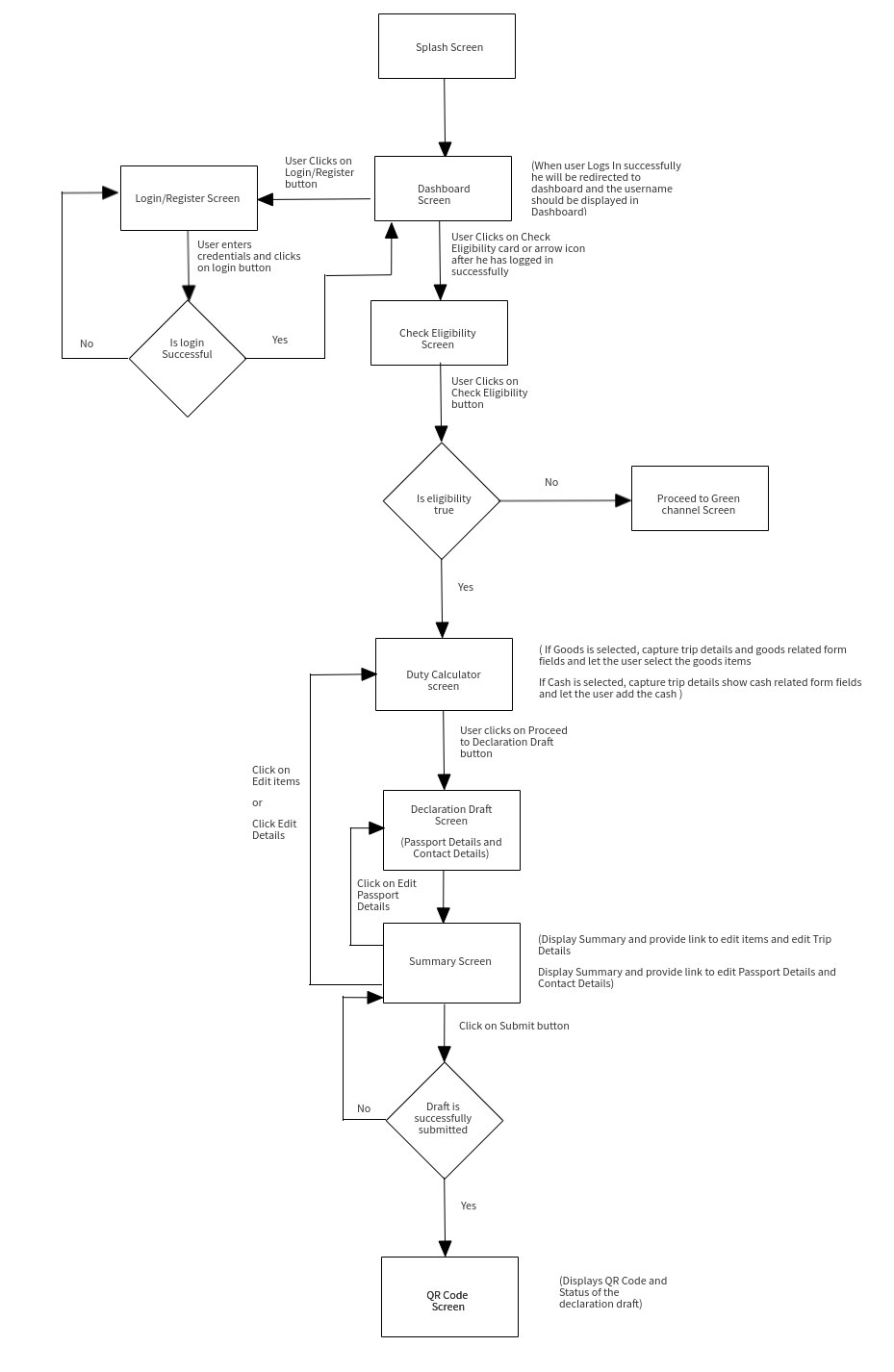
Wireframes
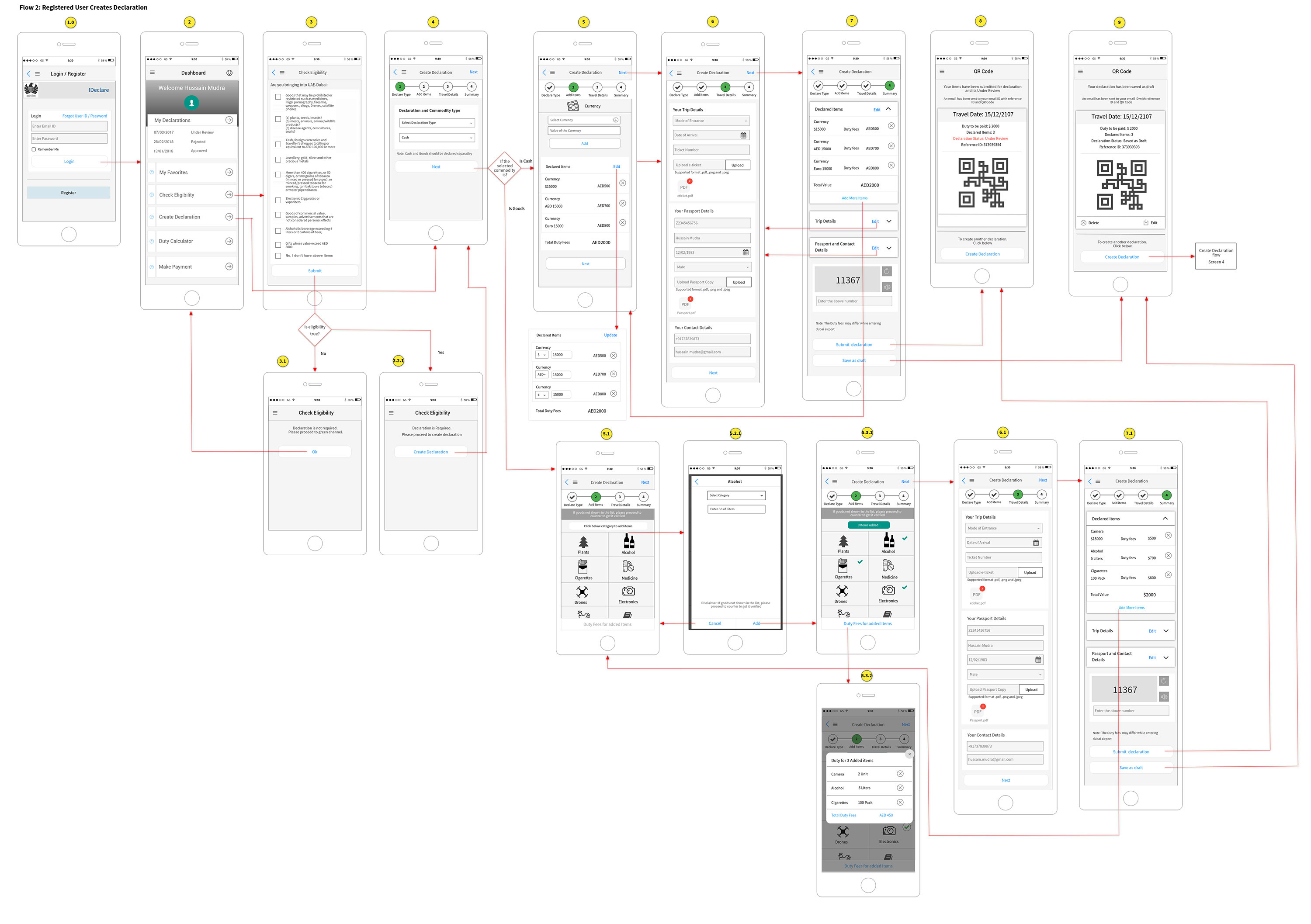
Interaction Design Process

Design Features
What I did:
I designed a structured, mobile-friendly flow covering eligibility checks, item selection from categorized goods, duty calculation, and QR code generation. The interface included modular steps (Declaration Type → Add Items → Travel Details), with features like save & resume, history view, and real-time validation to support frequent travelers and ensure error-free submissions.Why it matters:
This design reduced customs processing time from 45 minutes to just 5, offering travelers a faster, clearer, and more reliable way to declare goods before landing. It improved user confidence, increased declaration accuracy, and streamlined operations for Dubai Customs—leading to higher adoption and smoother airport experiences.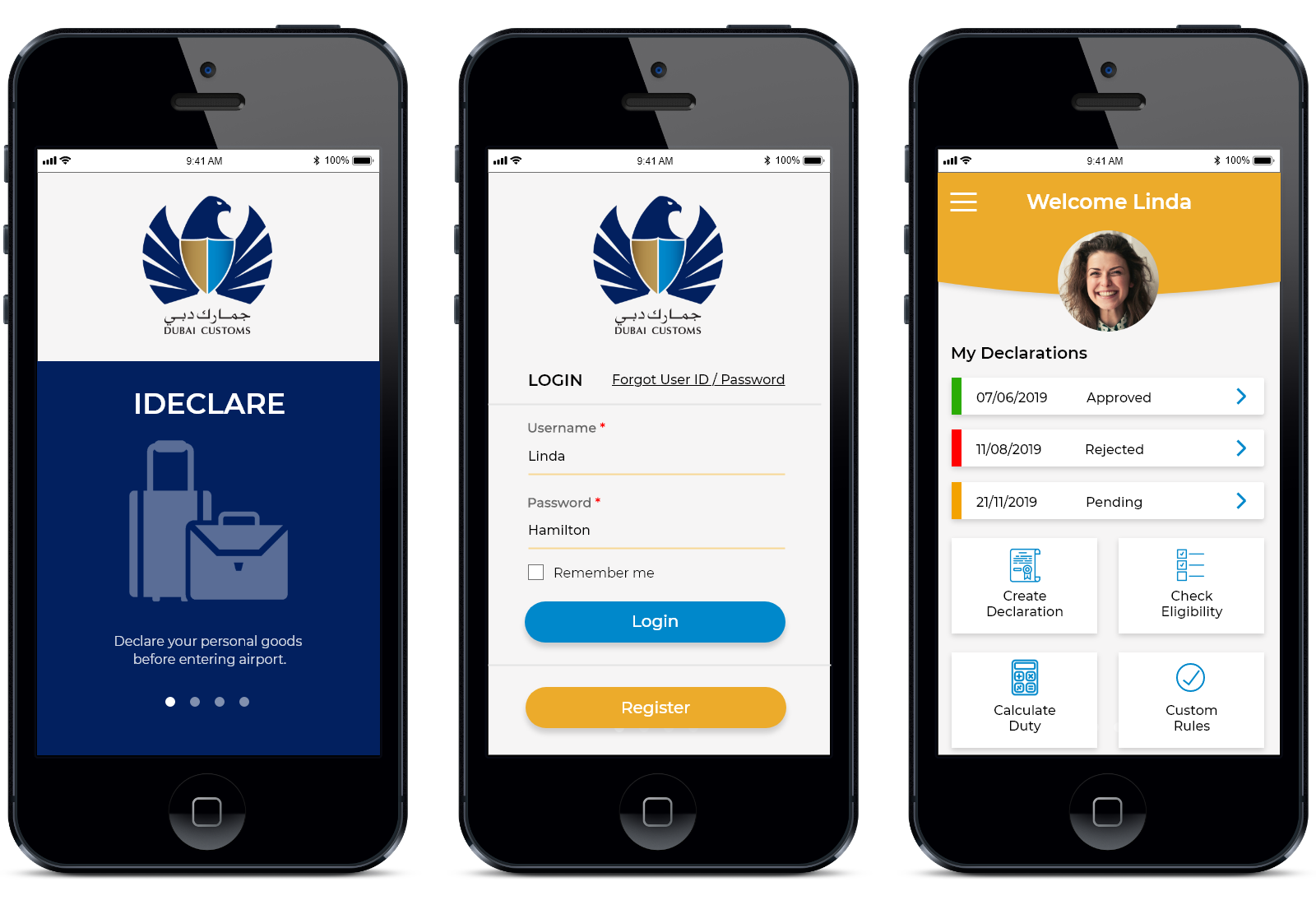
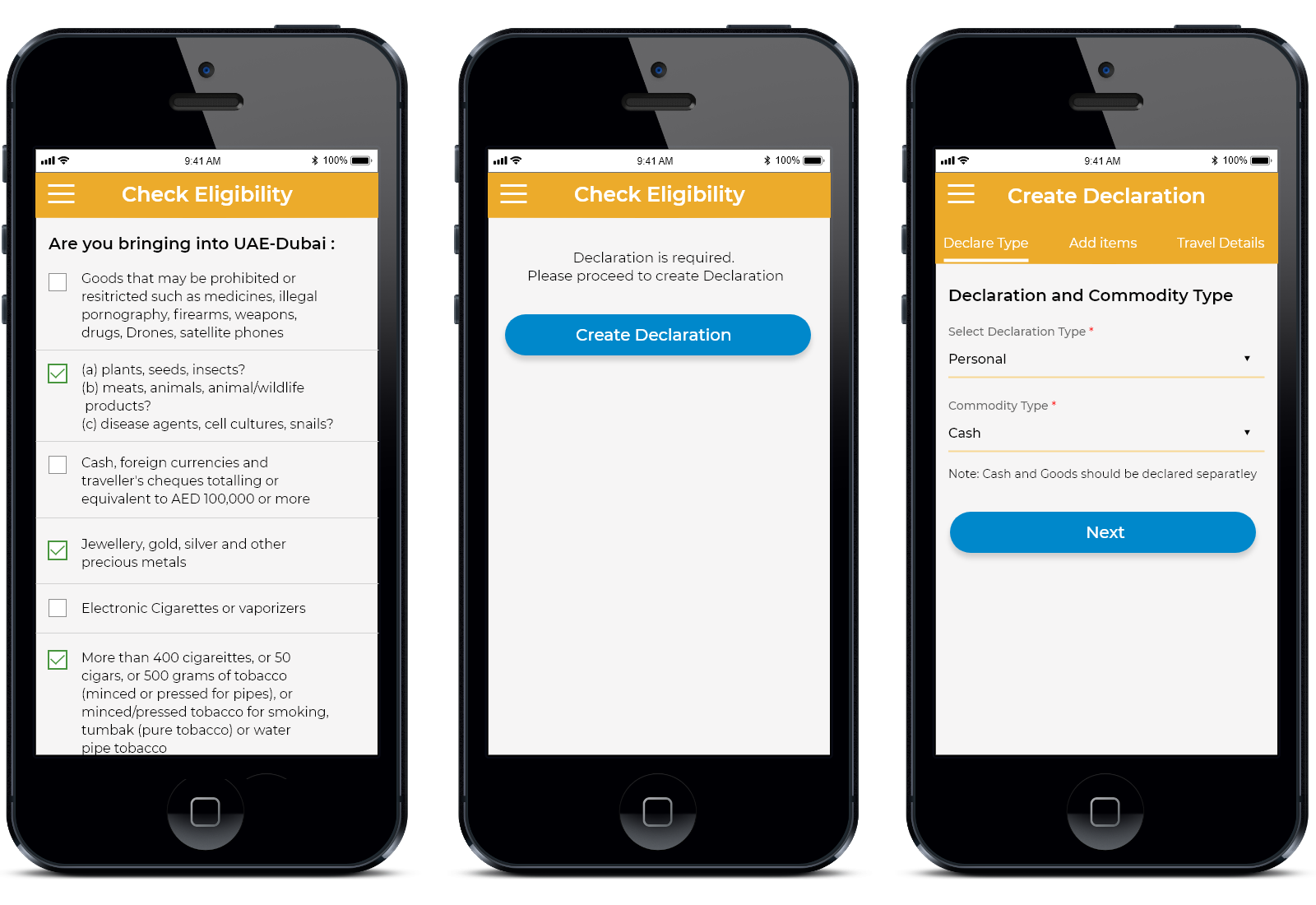
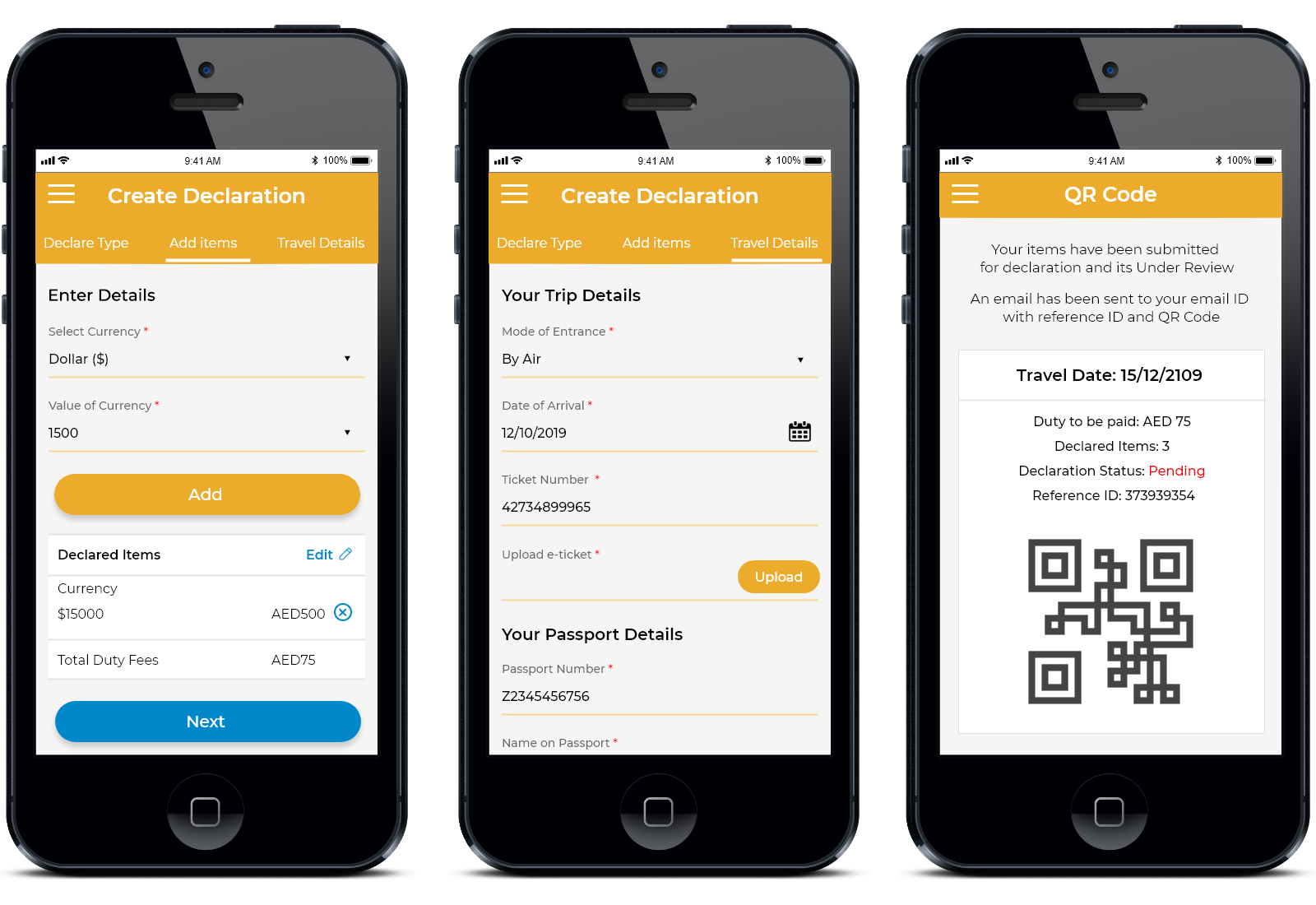
5. Implementation & Testing
I worked closely with developers to ensure a smooth handoff by providing clear design specs, interaction notes, and UI assets. During development, we reviewed the app iteratively to fine-tune usability, spacing, and responsiveness across key flows like declaration and QR generation.
Testing Methods
- Usability testing with 5 real users (tourists & business travelers)
- Iterative feedback from internal QA and stakeholder reviews
- Validation of form flow, duty calculator, and QR generation
- Minor interaction tweaks made based on real-time feedback
6. Outcome & Impact
Results Achieved
- Reduced customs clearance time from 45 minutes to 5 minutes
- 35% increase in declaration submissions post-launch
- Improved accuracy and compliance through smart categorization
- Higher app adoption among frequent international travelers
Client & User Feedback
"I declared my items while waiting to land. At customs, I just scanned my QR and walked through — it was that simple.”
Travelers found the process smooth, intuitive, and time-saving. Customs officers appreciated the reduced manual workload and faster passenger flow. The client praised the app for modernizing the declaration process and enhancing the overall travel experience at Dubai airports.